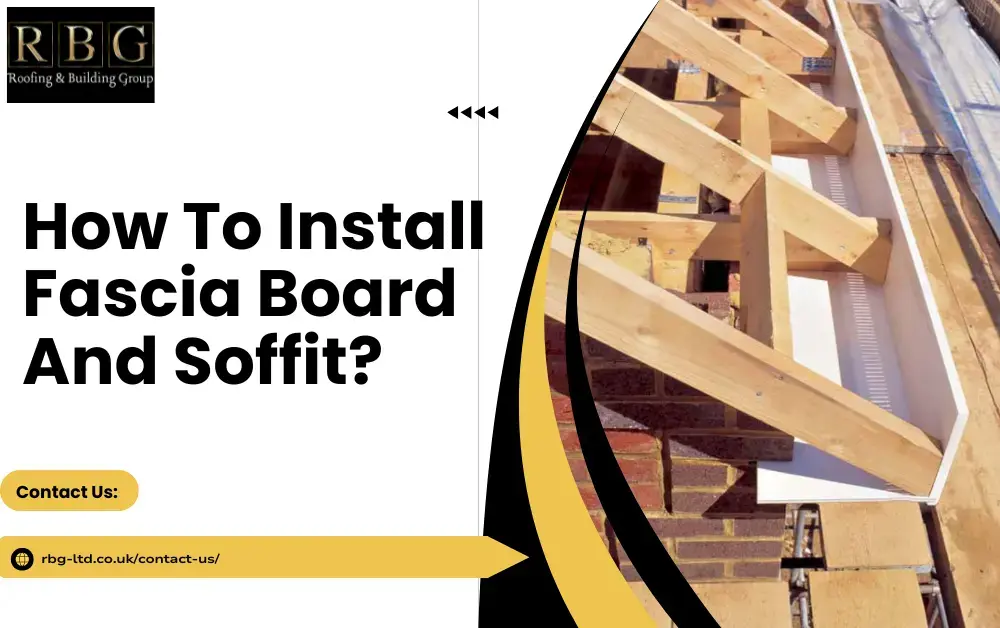Fascia boards and soffits might not be the first thing you notice on a roof, but they do a lot more than just complete the look of your home. They help protect your roofline from water damage, support the bottom row of tiles, and stop birds or pests from getting into the roof space.
We’ve worked on many homes where small issues with the fascia or soffit led to bigger problems like rot, leaks, or ventilation trouble, which can be especially problematic in Montgomery assisted living environments. That’s why proper installation matters, whether you’re fixing a damaged section or starting from scratch.
Role of Fascia and Soffit Boards in Roofing
Fascia boards and soffit boards have critical roles in your roofing system:
- Fascia Boards: They are installed at the roof’s edge, provide guttering support, and give the roofline a finished appearance.
- Soffit Boards: They are installed underneath the fascia, protect the eaves and allow for proper attic ventilation, which reduces the moisture buildup.

Tools and Materials Needed
To install fascia and soffit boards, you’ll need the following:
- Measuring tape
- Circular saw or hand saw
- Drill and screws
- Ladder or scaffolding
- PVC fascia boards and soffit boards (or timber, depending on preference)
- Sealant
- Ventilation strips (if not pre-ventilated soffit boards)
- Safety gear (gloves, goggles, and a hard hat)

Step-by-Step Guide on How to Install Fascia Board and Soffit
1. Prepare the roofline
Before installation, make sure the current roofline is free of debris, old boards, and damage. Inspect the rafters for decay or weakness and replace any damaged pieces.
2. Measure and cut the boards
- Measure the length of the roofline to determine the size of the soffit and fascia boards needed.
- Cut the boards to the appropriate size using a circular saw. Use a PVC or wood saw blade to make clean and precise cuts.
3. Install the fascia board
- Align the fascia board to the edge of the roof rafters. Make sure it is level and firmly fastened.
- Drill pilot holes and screw the board into position. For a neater finish on PVC boards, use screws with plastic coverings.
- If placing several boards along an extended roofline, make sure the seams are securely sealed and reinforced with supporting strips or joint coverings.
4. Install the soffit boards
- Begin by fastening the soffit board to the wall or rafters. If ventilation is required, pre-drilling the boards make the job easier.
- Screw the soffit to the fascia board, this will give a good fit. For larger spans, install support battens beneath the soffit for stability.
- Make sure all seams are sealed to prevent moisture penetration.
5. Add Ventilation Strips (If Needed)
If the soffit boards aren’t pre-ventilated, install ventilation strips to maintain airflow. Space the strips evenly along the soffit to ensure consistent ventilation.
6. Inspect and Finalise
After installation, inspect the work to ensure all components are securely fixed and sealed. The proper alignment of the boards will give your home a polished appearance and enhance functionality.

What should you consider before installing fascia and soffits?
- Choose the Right Material: PVC boards are durable, low-maintenance, and popular in the UK due to their weather resistance. Timber is a traditional choice but requires regular maintenance.
- Check Local Building Regulations: Make sure you comply with any local building regulations regarding ventilation and materials.
- Invest in Quality Fixings: Use rust-resistant screws and fixings to withstand the UK’s damp climate.
- Hire Professionals for Complex Rooflines: Consider hiring experienced contractors for safety and precision for complex or multi-story installations.
Conclusion
Installing fascia board and soffit protects your property from the elements while maintaining a professional appearance. Whether you’re doing a DIY project or hiring professionals, careful planning and high-quality materials are essential for success.
If you’re looking for reputable fascia and soffit board installers in Chepstow or nearby areas, go with a professional roofer. Regular maintenance and timely repairs will keep your roofing in top condition for many years.
FAQs
What are the best materials for fascia and soffit boards in the UK?
PVC is popular for its durability, low maintenance, and weather resistance. Timber fascia boards offer a classic look but require regular maintenance to prevent rot.
How much does installing a fascia board and soffit cost in the UK?
The cost varies depending on materials, roofline size, and labour. Professional installation costs £1,000 to £2,500 for a standard semi-detached house.
How often should fascia and soffit boards be replaced?
PVC boards can last 20–30 years with minimal maintenance, while timber boards may require replacement or repainting every 10–15 years. Regular inspections can help extend their lifespan.

